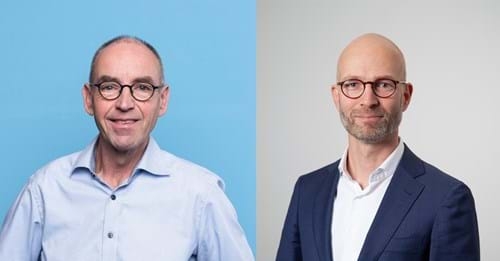- Home EN
- News
- Latest news
- 2020
- Data-driven roadmap steers Bouwinvest towards a net zero carbon ‘Paris Proof’ portfolio by 2045
Data-driven roadmap steers Bouwinvest towards a net zero carbon ‘Paris Proof’ portfolio by 2045
Bouwinvest aims to become ‘Paris Proof’ by 2045 at the latest: this means making its real estate portfolios carbon neutral and highly energy efficient by this date. Together with INNAX, Bouwinvest is developing data-driven roadmaps for its Dutch real estate funds to make them ‘Paris Proof’. In an interview with Proptech magazine Firestarters, Micha Reusen, Head of Sustainability and Innovation at Bouwinvest, and Joop van der Voort, Commercial Director at INNAX, explain why reliable real estate data is essential for making informed decisions about the execution of these strategic plans.

Roadmaps
As an institutional investor Bouwinvest is seeking to generate stable long-term returns for its pension fund clients. Climate change is one of the biggest risks facing the real estate industry, as buildings are responsible for 30-40% of global CO2 emissions. Bouwinvest is preparing for the challenge ahead with roadmaps. Micha: ‘’Twenty-five years is a long period of time and we need to know how we can make our assets ‘Paris Proof’ as smartly as possible. We have both a social and financial responsibility and by contributing to a more sustainable environment, we generate social and financial value. Our roadmaps will help us navigate the period of great uncertainty we face in the next decades. We see a roadmap as a guide that will allow us to remain in control and decide for ourselves when is the best moment to take steps to make an asset ‘Paris Proof’ in collaboration with tenants and property managers.”
Data-driven
Joop: “To create a roadmap, we need to collect data, like the features of the building, its current level of energy consumption and existing multi-year maintenance plans. That sounds easy but all this information about a property is very fragmented and needs to be brought together from several different sources such as the (local) government, the property manager and the tenant, as well as the landlord. We collect all that data and information to obtain an insight into the quality of the building in terms of its energy efficiency and how it functions in practice.’’
Micha: “We have already drawn up a roadmap for our Dutch Residential Fund. We already have a lot of data about our residential assets, a good insight into their energy performance and have now started with executing our plan. In the meantime, we are also drawing up roadmaps for our Dutch Retail, Office, Healthcare and Hotel funds.”
Joop adds: “A landlord needs to take a number of different factors into account: the needs of tenants, developments in technology, government regulation, the financial aspects and unknown risks. Our data-driven approach and the application of smart algorithms allow owners to process all these different interests and make the right choices. The data hub we have created provides insights into how buildings score in terms of their energy performance and what measure can be taken to improve it. That information provides the basis for the first steps and the financial overview: what does this mean for the landlord, the property manager and ultimately future rents. Based on the outcomes of our data-driven scenarios, we can decide whether this would be a smart thing to do.”
Innovation and technology
Micha: ‘’In the next phase we will integrate the roadmaps into our medium-term strategic plans, which we update every three to five years. Our medium-term roadmaps provide detailed plans that are integrated into our regular maintenance plans. The key challenge is to set priorities, and constantly examine the different scenarios and weigh the choices. Flexibility is key, and we are constantly adjusting our plans. The portfolio is also continually changing due to new acquisitions and disposals, new occupiers, energy performance improvements and so on, so we need to update our roadmaps regularly. The challenge is to do what is efficient now and take steps without losing sight of the ultimate goal.’’
Joop: “The key is to obtain a good overview of what is possible now with current technologies and where it makes more sense to wait for new innovations. New technologies are constantly evolving and in the future we see a greater role for geothermal energy, hydrogen fuel and seasonal power storage, which will no doubt create new opportunities. These new innovations will be added to our model and can provide adjustments in the roadmaps when they have been further developed.’’
